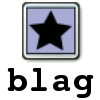Note Taking Software for Linux (A Review of NoteCase)
September 12, 2008 Reading time: 10 minutes
**UPDATE** This review is of the current build in the Ubuntu Repos, which the author of the software has notified me is out of date, for the most recent release (With several of these issues addressed), download one of the precompiled binaries (available for most any systems) from their website.
UPDATE 2: NoteCase is now a paid app. The free version has been discontinued.
I believe many people choose to use Linux on their laptops for the simple reason that it works, and works well on low-powered machines. As a student, a low-power machine is the only viable option. Also, as a student, good note-taking software is a must. Before I switched over to Linux, I was an MS OneNote guy. Let me begin by saying that there is no direct equivalent…yet. Read more
Dropbox Goes Live – Free 2GB of Synchronized Storage for All!
September 12, 2008 Reading time: 2 minutes

I am pleased to report that Dropbox has fully opened to the public, no more invitations needed! A few weeks ago I reviewed Dropbox (see review) and concluded that it was the online storage service of my dreams. I still hold to that claim.
Everyone who signs up receives 2 GB of storage space. Not only that, you can easily link multiple computers to your Dropbox account and effortlessly keep your files in sync. It’s like FolderShare, but with an online backup element. Yes, it’s a dream come true. 🙂
Clients are available for Windows, Mac OS X, and Linux. There’s even an iPhone client. Here I am installing the Dropbox client on Ubuntu 8.04. Read more
How-To: Create Screencasts on (nearly) Any Operating System
June 29, 2007 Reading time: 12 minutes
Screencasts, or capturing a digital video of movement on your computer screen, are a great way to create tutorials, presentations, and even entertaining videos. Software used to create screencasts abounds for (nearly) every operating system, and ranges in price from free to upwards of $50.
As an example, here is a sample screencast (2.5 MB – Ogg Theora) showing the installation of Google Desktop for Linux. If you can’t open the video, please use VLC.
Naturally, I prefer the free options, but will give credit when credit is due if a paid option is simply better than a free option. That said, here is an overview of some of the screencast options available for Windows, Linux, and OS X, and possibly other operating systems. Read more
“Ghost” Your Windows System for Free Using Open-Source Tools
June 5, 2007 Reading time: 20 minutes
The following tutorial is intended for those with some knowledge of Linux and the command line. At the least, you should be comfortable with creating and navigating directories, and should possess a fundamental knowledge of hardware device names under Linux.
Sound scary? A “point-and-click” guide to accomplishing most of the same tasks is also available.
The Problem
Like it or not, Windows needs to be reinstalled occasionally. Whether the cause is a bloated registry, a virus/spyware attack, or an idiotic user, with time Windows just seems to slow down and/or behave erratically.
Re-installing Windows from scratch is a pain. Once you get the base system installed, most people have to download millions of updates and patches, scour the web in search of the latest drivers, and reboot, reboot, reboot. Read more
Review: BLAG 60001 – Linux Without Boundaries?
May 12, 2007 Reading time: 19 minutes
BLAG: Linux Without Boundaries?
If you happen to visit the BLAG Linux homepage, one of the first words your eyes will read is “overthrow.” Specifically:
[blag] works to overthrow corporate control of information and technology through community action and spreading Free Software.
Interesting. I’ve tried a lot of Linux distros, but this is the first one whose “anarchistic” intentions are so boldly stated. Alright, perhaps referring to BLAG as “anarchistic” is excessive, so let’s focus on the facts.
What is BLAG?
Made by the Brixton Linux Action Group (hence the name), BLAG is a Linux distro, and not a very popular one at that. It is currently ranked number 79 at Distrowatch, using the “6-month” time-span. More specifically, BLAG is a one-CD distro based on Fedora. The latest version (“60001” – as of this writing) is based on Fedora Core 6. Included on its one CD are numerous applications that a desktop user would “expect” to have.
Read more
A Minty-Fresh Linux Distro
February 24, 2007 Reading time: ~1 minute

Recently I heard about a fairly new distro of Linux dubbed “Linux Mint.” It’s an Ubuntu-based derivative whose claim to fame is the inclusion of many “non-free” codecs and drivers. This adds convenience and reduces the hassle of post-install configuration. In a typical scenario, one installs a flavor of Linux and then spends time configuring package repositories to enable the playback of DVDs, MP3s, Flash plug-ins, and various other multimedia types. This inclusion of non-free software comes with varying degrees of ease (or difficulty!) depending on the disto in question.
To be honest, I have not yet tried this distro, but am downloading it now. I feel that it holds promise – I enjoy Ubuntu for its ease of use, but I always set up the Automatix package to assist in the installation of many non-free software packages. If Linux Mint provides the same ease of installation/use as Ubuntu yet reduces the amount of time spent post-installation, I think we have a winner on our hands provided that software updates are provided in a timely fashion.
Linux Mint is new, so time will tell. Perhaps I’ll post a review after getting acquainted with this “minty-fresh” distro.